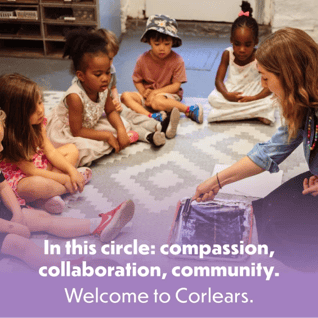Some children may have a moment of big feelings that are expressed outwardly by clinging, crying, or screaming. They experience true fear because of what’s called “separation anxiety” when being dropped in a new space for the first few times.
Below, learn more about separation anxiety and read some helpful tips to support your child during this transition stage.
What Is Separation Anxiety?
Separation from a primary caregiver can make children feel unhappy, abandoned, or frightened. As uncomfortable as this might sound, it is a developmentally appropriate response, as children have not yet developed object permanence — the ability to understand that objects (including people) continue to exist even though they cannot be seen, heard, smelled or sensed in any way.
Most infants and toddlers are affected in some way by separation. Whether or not children outwardly express emotions, we know that they are doing the mental and emotional work to absorb and understand their new setting and the people in it.
No matter how subtle, extreme, or neutral a child’s response to separation may be, we can, as caregivers, be welcoming and understanding. As adults there are many things we can do to support children through the separation process. Two of these things are preparing your child for the space they are about to spend time in and reassuring them that grown ups come back.
Preparing for a New Space
Talk to your child about what will happen as they walk into the classroom. You could say something along the lines of:
-
“Today we are going to your new school together. We’ll meet your new teachers… let’s look at the picture of them again.” (A photo of your child’s classroom teachers might be provided to you several weeks before school begins, or could be listed on your school’s website).
-
“We’re going to hold hands and walk into school together. We will say “hi” to your new teachers and then find some toys to play with.” Teachers at Corlears and often times at other schools will send photos and lists of the materials and tools that will be out for children to play with on their first few days of school.
-
I’ll play with you for a little while at school before saying, “goodbye.” Remember, grown-ups come back. When we say, “goodbye” it will look and sound like this. (Practice saying “goodbye” and “I’ll see you really soon”.)
"Goodbye" vs. "Be Right Back": What’s the Difference?
-
“I’ll be right back”: You’ll be leaving for five to ten minutes and then return. This is a phrase you’ll likely be using when gauging how your child(ren) respond to your absence.
-
“Goodbye”: This is a statement that corresponds to you leaving and not coming back until the school day is complete. Once you’ve said “goodbye,” it is important that you not return to or peak into the classroom. This could create further confusion for children and work in contrast to the consistency we’ll all be working to provide during this time.
Before leaving the classroom space, it is important to say “goodbye” or “I’ll be right back” regardless of how your child responds to the statement. Not “sneaking out” on a child preserves and respects the trust he or she has developed in you.
In the below video, Early Childhood Head Teacher Michelle Malakoff shares advice on how to say goodbye at drop-off in a way that sets your child up for a positive adjustment.



